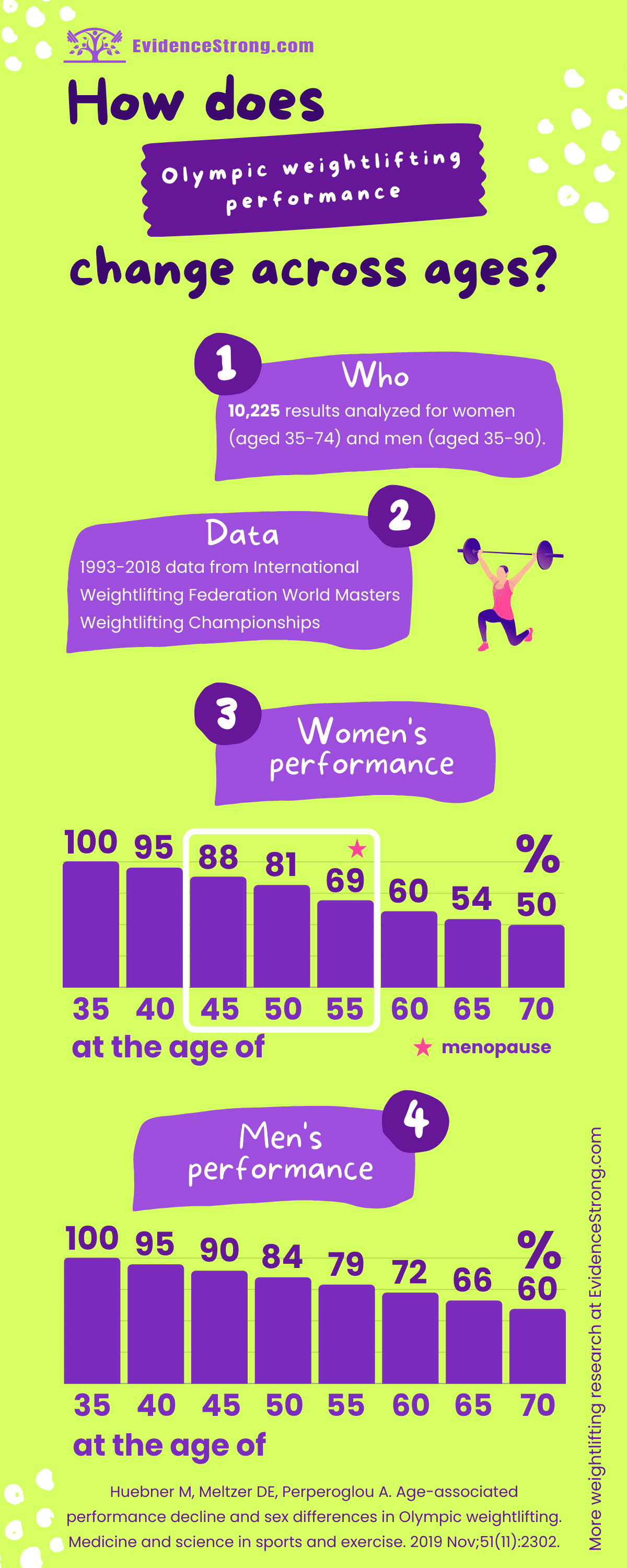Summary of an article on the changes in Olympic weightlifting performance with age in male and female Olympic weightlifters.
Who
10,225 results were analyzed for women (aged 35-74) and men (aged 35-90).
Design
1993-2018 data from International Weightlifting Federation World Masters Weightlifting Championships. Weight classes have changed, so all data were adjusted using the 2017 Sinclair formula.
Outcome measures/tests
- total weight lifted [kg]: best snatch + best clean&jerk
Main results
- At the age of 40 years, women are 95.2% and men are 94.7% as strong as they were at the age of 35.
- At the age of 60, women are 60.4% and men are 72.3% as strong as they were at the age of 35 years.
- Median results of age categories compared to the results at the age of 35:
Age
40
45
50
55
60
65
70
Women's %*
Age
40
95.1
45
87.9
50
81.3
55
69.1
60
60.4
65
54.2
70
49.6
Men's %*
Age
40
94.7
45
89.6
50
84.4
55
78.6
60
72.3
65
65.9
70
59.3
Take home message
For a clinician & coach
Women's total weigth lifted declines stipper with age than man's after the age of 45 years. The biggest decline was between the ages of 45 and 55, which correlates with the time when women experience menopause. At the age of 60, the best women can lift 60% of what the best women at 35 years of age can. Men at 60, can lift 70% of what the men at 35 can.
For a parent
Women's total weigth lifted declines stipper with age than man's after the age of 45 years.
For an athlete
Women's total weigth lifted declines stipper with age than man's after the age of 45 years.
Original article
Huebner M, Meltzer DE, Perperoglou A. Age-associated performance decline and sex differences in olympic weightlifting. Medicine and science in sports and exercise. 2019 Nov;51(11):2302.
Read next
How did pandemic affect Olympic weightlifters?
What happens during 10 years of Olympic weightlifting? (in women)

